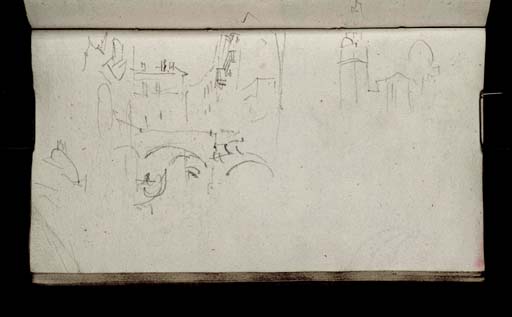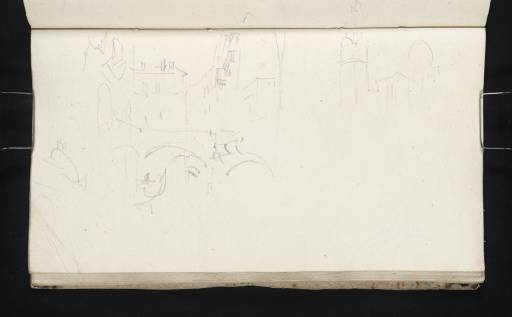Joseph Mallord William Turner The Rio del Mondo Novo, Venice, with the Ponte Pasqualigo e Avogadro; the Campanile and Dome of Santa Maria Formosa 1833
Image 1 of 2
-
 Joseph Mallord William Turner, The Rio del Mondo Novo, Venice, with the Ponte Pasqualigo e Avogadro; the Campanile and Dome of Santa Maria Formosa 1833
Joseph Mallord William Turner, The Rio del Mondo Novo, Venice, with the Ponte Pasqualigo e Avogadro; the Campanile and Dome of Santa Maria Formosa 1833 -
 Joseph Mallord William Turner, The Rio del Mondo Novo, Venice, with the Ponte Pasqualigo e Avogadro; the Campanile and Dome of Santa Maria Formosa 1833 (Enhanced image)Enhanced image
Joseph Mallord William Turner, The Rio del Mondo Novo, Venice, with the Ponte Pasqualigo e Avogadro; the Campanile and Dome of Santa Maria Formosa 1833 (Enhanced image)Enhanced image
Joseph Mallord William Turner,
The Rio del Mondo Novo, Venice, with the Ponte Pasqualigo e Avogadro; the Campanile and Dome of Santa Maria Formosa
1833
Joseph Mallord William Turner 1775–1851
Folio 31 Verso:
The Rio del Mondo Novo, Venice, with the Ponte Pasqualigo e Avogadro; the Campanile and Dome of Santa Maria Formosa 1833
D31987
Turner Bequest CCCXIV 31a
Turner Bequest CCCXIV 31a
Pencil on white laid paper, 109 x 203 mm
Partial watermark: crescent moon with face in profile
Partial watermark: crescent moon with face in profile
Accepted by the nation as part of the Turner Bequest 1856
References
1909
A.J. Finberg, A Complete Inventory of the Drawings of the Turner Bequest, London 1909, vol.II, p.1013, CCCXIV 31a, as ‘Buildings’.
The page’s basic 1909 Inventory title (‘Buildings’)1 was amended by Ian Warrell to ‘View on a Side Canal, Probably the Rio del Palazzo; The Campanile and Dome of Santa Maria Formosa’ in 2003, in connection with his concurrent Turner and Venice exhibition at Tate Britain.2 The two separate drawings were made with the page turned horizontally, and the cramped canal view on the left, notable in showing three juxtaposed bridges immediately ahead, was subsequently suggested by Warrell3 as instead showing the Rio del Mondo Nuovo (off the northern end of the Rio del Palazzo – see folio 30 verso and the recto of this leaf; D31985–D31986)
Despite the relative slightness of the sketch, it does indeed show the view north-east along the canal before it turns a corner under the Ponte di Ca’ Venier on the left. The Rio del Rimedio is to the right and the Rio di Santa Maria Formosa ahead, under the two-part Ponte Pasqualigo e Avogadro; the heavy corbels dashed in towards the right are key details, remaining under the pavement between the two spans, and other swiftly rendered arches and balconies nearby are still evident.
As Warrell recognised, the other study here shows the campanile and dome of the large church of Santa Maria Formosa, with Renaissance and Baroque elements, not far north of this junction, set back on a broad quay beside the Rio del Mondo Nuovo. The sketch appears somewhat notional, since this aspect, as if approaching from the south, is obscured by a large projecting block immediately to the right of the pedimented west end, which is seen in more detail from the north-west a few pages later, on folio 36 verso (D31996), likely after Turner had explored the neighbourhood as far as the better-known church of Santi Giovanni e Paolo (see under folio 32 verso; D31989).
Another view from that direction is on folio 59 verso (D32042), where the church’s cramped canal-side situation is particularly apparent (albeit a spacious campo opens out behind it); the latter is part of another short sequence showing the same area, up to folio 61 recto (D32042–D32045). For this sketchbook’s somewhat convoluted general sequence, see its Introduction.
Both drawings here are continued a little way upwards over the gutter onto folio 32 recto opposite (D31988), with only a cursory mark in the case of the canal view, but more crucially showing the top stages of Santa Maria’s campanile.
Matthew Imms
May 2019
How to cite
Matthew Imms, ‘The Rio del Mondo Novo, Venice, with the Ponte Pasqualigo e Avogadro; the Campanile and Dome of Santa Maria Formosa 1833 by Joseph Mallord William Turner’, catalogue entry, May 2019, in David Blayney Brown (ed.), J.M.W. Turner: Sketchbooks, Drawings and Watercolours, Tate Research Publication, March 2023, https://www

